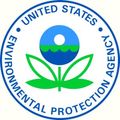Update: The Pennsylvania General Assembly responded to this problem by enacting the Private Transfer Fee Obligation Act, 68 Pa. C.S. §8101, P.L. 40, No. 8, effective June 24, 2011. The Act prohibits the fees described below. Buyers who are confronted with instruments that purport to impose such transfer fees should consult with counsel. The Act is reproduced here.
Home buyers should be on the alert for a new type of cost to buy real estate: the "resale fee", "that allows the developer to collect 1 percent of the sales price from the seller every time the property changes hands — for the next 99 years."
You should read the illuminating story in the New York Times which describes the practice (also called "private transfer fee") and its pitfalls.
Listen to the sales pitch, in a press release issued by Freehold Capital Partners:
"Freehold Capital Partners...is pleased to announce that it has partnered with a major developer on a real estate project in Pennsylvania. The project's estimated final improved value is $250,000,000.00. By working with Freehold to structure a one percent Capital Recovery Fee, the project developer can spread development costs over time, and, in consequence, reduce the initial sales price. The fee runs for the expected useful life of the improvements, and then expires. According to Ph.D. land economist Dr. Tom McPeak, "a lower initial price will result in lower acquisition costs, reduced carrying costs, and reallocation of the savings," thus making homeownership more affordable. (See "The Economics of Private Transfer Fee Covenants"). Buyers who buy for less can then sell for less, passing on the savings to future owners."
Proponents sometimes attempt to gain acceptance of the fee by claiming that a portion of the fee will be allocated to "community benefits". The press release continues: "A portion of the future income stream created by Freehold is allocated to non-profits that benefit the community. Through this program, long-term funding is created for clean air, clean water, green space, literacy, affordable housing and similar endeavors that help build better communities and enhance the quality of life in and around our projects."
Finally, the press release assures us that imposing this fee on every sale for 99 years is a matter of fairness to the first time buyer: "A Capital Recovery Fee represents an attractive alternative to the traditional practice of putting 100% of the burden for long-term improvements (such as roads, water lines, lift stations, etc.) onto the shoulders of first time buyers."
Of course, the "traditional practice" has worked well since the beginning of modern real estate development. Moreover, it did not burden real estate buyers with the risk that when it comes time to sell their homes the one percent additional fee will be a cost that will force them to reduce their sale price to compete with sellers whose properties are not subject to the fee.
The fees are sometimes buried in the fine print of closing documents or, even worse, hidden in a lengthy "covenants and conditions" document that is not presented at closing and requires no signature, but whose terms "run with the land" and bind all owners of the property. Unpaid fees would almost certainly result in liens on the property.
Even worse, companies advocating these resale fees are pitching Wall Street to "securitize" these fees, in a manner similar to the subprime loan securitization debacle which helped bring the U.S. economy to its knees.
The Department of Housing and Urban Development recently determined that the fees violated its regulations and that HUD would not insure mortgages on properties that included them. The Federal Housing Finance Agency is considering a proposal to prohibit the transfer fees on all mortgages financed by Fannie Mae, Freddie Mac and the Federal Home Loan Banks. The FHFA proposal is now open for public comment until October 15, 2010. Although seventeen states have prohibited or restricted the practice, at the time of this post Pennsylvania has not yet acted.
Buyers of real estate should ensure that they are advised by competent counsel who can identify these problems. The closing documents should be carefully reviewed. Recorded declarations of covenants and conditions, although they may not be closing documents, can nevertheless bind owners of the property. It is important that buyers understand these covenants and conditions and be advised of their consequences.













